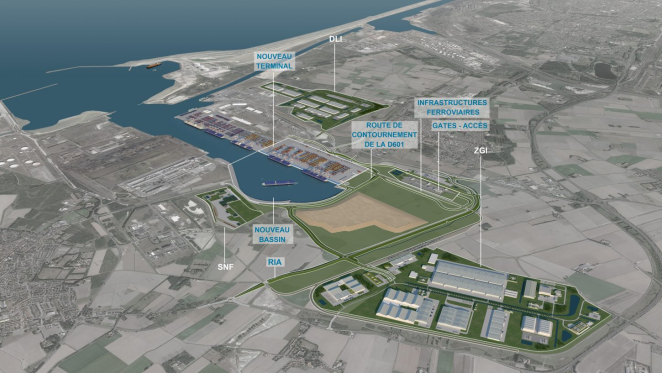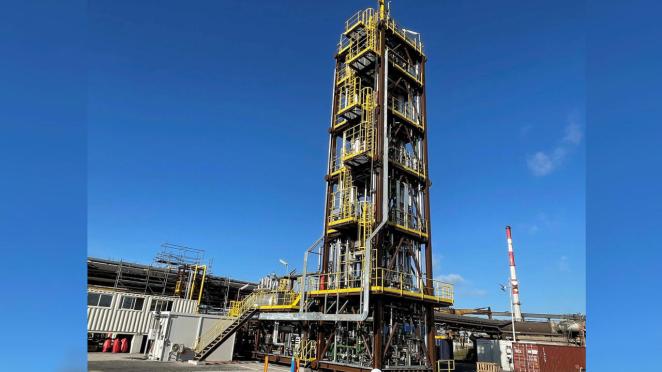Dunkirk’s ambition to become the key territory of decarbonised industry and electric mobility is shared by all socio-economic stakeholders in the region. With a whole range of projects, GRITH partners Pôlénergie are supporting companies and territories in Hauts-de-France in their decarbonization strategy.
The ongoing success of industrial transition on several sites in this region feed into GRITH as best practice examples in terms of stakeholder engagement, made-to-measure technical solutions and economic models. Projects under the flag of Low Carbon Industrial Zone (ZIBaC) from the French Environment and Energy Management Agency (Ademe) provide inspiration and knowledge exchange opportunities.

ZIBaC strategy Dunkirk
What is ZIBaC?
With the ZIBaC initiative, the French government wants to support industrial regions in their ecological and energy transformations and to accelerate the decarbonisation of the nation’s main industrial basins. The aim is threefold:
- Improve competitivenessand support economic activity.
- Achieve a 30% CO2 reduction in 2030 and carbon neutrality in the port area by 2050, enabling industrial resilience for climate change.
- Encourage new sectors, such as hydrogen, to support the energy transition.
Dunkirk has been one of Europe's industrial powerhouses for many decades now. With factories turning out steel, cement and fertilizers, this area emits more carbon dioxide than any other industrial region in France. The strategy to decarbonize is based on 3 main axes:
- Circularity
- Energy: electrification, H2 and energy efficiency
- Carbon capture, reutilization and stockage
This strategy will be supported by major infrastructural improvements: electricity, water, CO2, H2, CH4 and heat.

All stakeholders on board
The project is particularly remarkable since it is a collaboration with all the important stakeholders in the territory including: politicians, researchers and economic actors. Most notable among these are AirLiquide, Aluminium Dunkerque, ArcelorMittal, DunkerqueLNG, ENGIE, Eqiom, GRTgaz, H2V, Lhoist, RTE, la Communauté Urbaine de Dunkerque, Euraénergie, and le Grand Port Maritime de Dunkerque.
Green industrial revolution
Our GRITH colleagues at Pôlénergie, Eirik Steen and Grégory Desmidt are energized. ”We’re seeing a new industrial revolution. The Dunkirk region is totally transforming through this low-carbon strategy,” says Eirik.
“Considering more than 75% of industrial CO2 emissions in Hauts-de-France (16 out of the 20 Megatons) is a result of industrial activities in Dunkirk, we are witnessing an enormous shift,” Grégory adds. “This will have a huge impact on the sustainability goals in the region as well as nationally.”
We’re seeing a new industrial revolution
Hydrogen in Iron & Steel
Another innovative technological solutionis the use of hydrogen – instead of coal – to avoid emissions during the iron reduction process. The ArcelorMittal Dunkirk steel plant, with its 450-hectare hot-rolling mills, is one of the largest in Europe and responsible for the majority of CO2 emissions in the region. The benefits of hydrogen are manifold and the goal is to eventually use green hydrogen from carbon-neutral energy sources (such as wind, solar or nuclear power).

3D Carbon capture pilot at Dunkirk, 2022
Carbon Capture
If an industrial site emits high concentrations of CO2, it can be captured and transported. While the focus is on avoiding CO2 emissions as much as possible, it is one of the solutions that can be implemented toslow down the rising temperatures. In Dunkirk, like other concentrations of heavy industry, some actions are planned regarding carbon capture, utilization and storage (CCUS). This includes the development of a multimodal hub for capturing, receiving, recovering and exporting industrial CO2.
The CO2 storage and export terminal in Dunkirk is close to many local industrialists with a direct access to the sea. The terminal will be part of the European CO2 Transport and Storage Network, which will connect France to North Sea CCS hub and the Netherlands.The capacity of the terminal is planned to be from 3 million tons CO2 per year (phase 1 2025-2030) to 11.8 million tons CO2 per year (2035-2050) .
Knowledge sharing
GRITH looks forward to accessing knowledge on all these developments in Dunkirk through our Pôlénergie partner. With this shared knowledge and experience, upscaling and accelerating the reduction of CO2 becomes more feasible and the EU climate goals more achievable.
